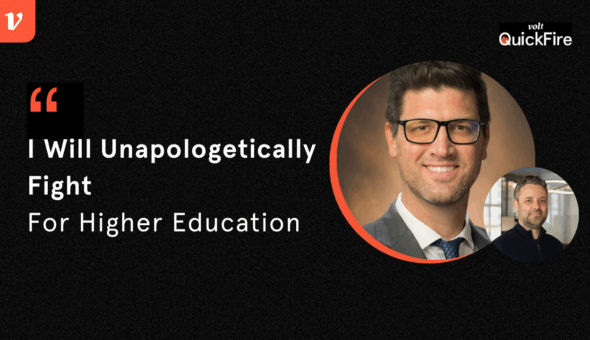There is no doubt that higher education institutions are facing challenges on multiple fronts – challenges that were unthinkable only 10-20 years ago. Much has been written about the shift in demographics, extreme financial pressure, and even the changes in perception of the value of a college degree. Most colleges and universities must compete for every student – rather than students competing to get into most colleges. Given all the changes and challenges facing colleges, the need to provide meaningful differentiation has never been more critical. Colleges and universities have much in common as higher education continues to become commoditized. But that doesn’t mean that colleges shouldn’t strive to differentiate themselves from the competition.
So, where should college leaders begin? It starts with understanding the unique value proposition of the institution, which can be uncovered through a facilitated process. It’s surprising that many schools don’t understand their own value proposition or authentic brand. A structured process, which will be explained below, can help any institution identify what makes them special by discovering what their prospective students are looking for.
No. 1: Define your highest purpose as an organization
College leaders must engage a small group of stakeholders and ideally engage an outside facilitator to walk through the following process. Smaller schools should plan on at least a half-day session to gain insights about your institution; larger schools may need a lengthier process to include all relevant stakeholders across schools and departments. The goal? Define your highest purpose as an organization. This may seem simple, but you’ll find it’s harder than it first appears. The key to this step is to think big. For example, a typical response might be “to provide students with a great education.” While certainly an important aspect of a college’s mission, it isn’t unique. What can your school help students achieve over a lifetime that most other schools can’t? What are your school’s core, foundational values that shape how you deliver that educational experience and lifetime benefit? What are the characteristics of ideal students and the leaders you put out into the world after graduation? Answering these questions begins to clarify your institutional purpose.
No. 2: Identify emotional barriers
The second step of the process: Take a candid look at what emotional barriers exist between your school and your target audiences—current students, prospective students, and alumni for example. In other words, what prevents them from engaging with you and your mission? Fear of failure? Financial concerns? Missional misalignment? Lack of trust? Asking multiple stakeholders this question will generate surprising and insightful answers that will encourage you to take a hard look at what barriers exist between your brand and your audience.
No. 3: Select a desired emotional response
Once you have generated your list of barriers, the next step is to identify how you want your audiences to feel when they experience your brand. What emotional response do you want to engender in your prospective students—confidence, hope, belonging? The answers to these questions will help you home in on your unique value proposition and authentic brand.
No. 4: Develop a brand brief
The final step in this facilitated process to develop a brand brief that will guide your marketing and messaging strategies. You’re not developing messaging or tactics at this stage but are developing a brief statement that articulates how your highest purpose can meet the emotional objective of your target audience. This statement typically is constructed with the language generated in earlier steps in the process.
After agreement is reached on this brand brief, it can then be used to build external messaging that will further refine and articulate why your school is able to help students reach their own highest goals. This process is obviously more involved than what can be shared here, but the previous steps should give higher ed marcomm professionals a framework to begin identifying their unique purpose, brand and value proposition—and how you can best articulate that purpose to your prospective students.









